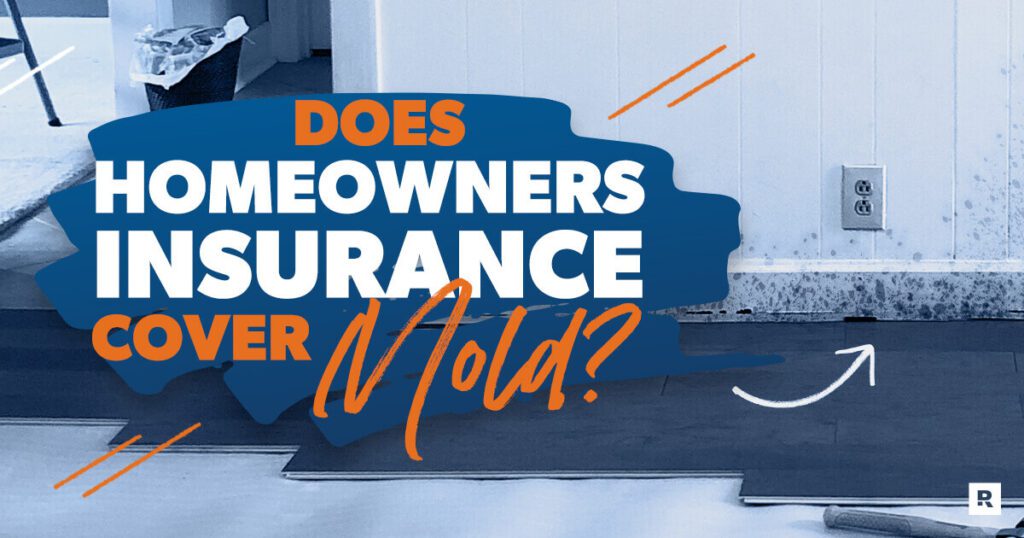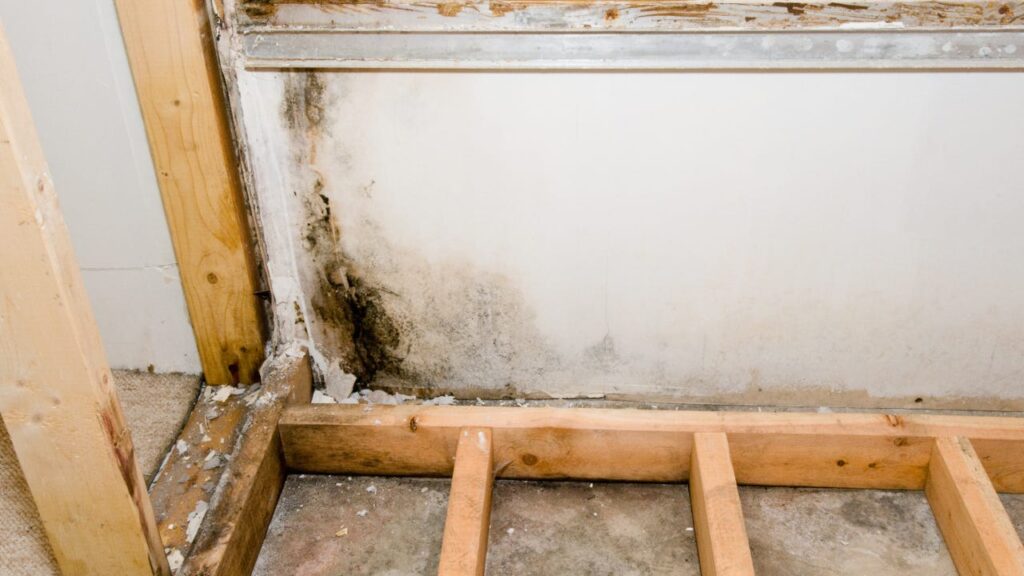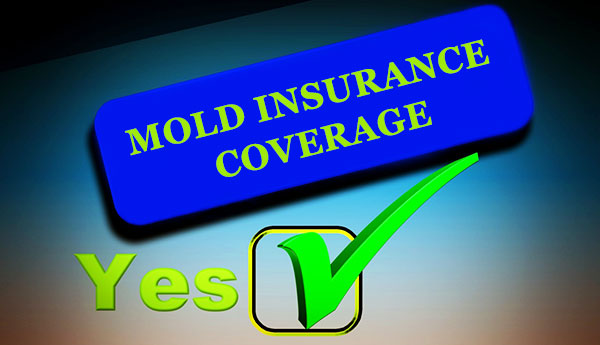If you own a home in Phoenix and find yourself dealing with a mold problem, the first question that might come to mind is whether or not your homeowners’ insurance will cover the cost of removal. Mold can pose serious health risks and cause significant damage to your property, so it’s essential to know if you’re protected. In this article, we will explore the topic of mold removal in Phoenix and investigate whether homeowners’ insurance policies typically cover this type of expense.

1. Understanding Mold in Phoenix
Mold is a common issue that many homeowners in Phoenix may have to deal with at some point. It is a type of fungus that thrives in moist environments and can grow rapidly if not addressed properly. Understanding the causes of mold growth, the different types of mold, and the impacts it can have on your health is crucial for effectively dealing with this problem.
1.1 Causes of Mold Growth
Mold requires three key factors to grow: moisture, a food source, and the right temperature. In Phoenix, where the climate is hot and dry, moisture issues are often caused by water leaks, high humidity levels, and inadequate ventilation. Plumbing leaks, roof leaks, and condensation are common culprits for creating the ideal conditions for mold growth in homes.
1.2 Common Types of Mold
There are many different types of mold that can be found in Phoenix homes. Some of the most common include:
- Aspergillus: This is one of the most prevalent types of mold and can be found both indoors and outdoors. It can cause allergies and respiratory issues in some individuals.
- Cladosporium: This mold is often found on surfaces such as carpets, wooden surfaces, and fabrics. It can cause respiratory problems and skin irritation.
- Stachybotrys chartarum: Also known as black mold, this type of mold thrives in areas with excessive moisture and can be toxic. Exposure to black mold can lead to severe health issues, including respiratory problems and neurological symptoms.
1.3 Impacts of Mold on Health
Exposure to mold can have various health effects, especially for individuals who are sensitive or allergic to it. Common symptoms of mold exposure include respiratory problems, coughing, sneezing, eye irritation, and skin rashes. People with pre-existing respiratory conditions, such as asthma, may experience worsened symptoms in the presence of mold. Prolonged exposure to mold can also lead to more serious health issues, so it’s essential to address mold problems promptly.
2. Homeowners’ Insurance Coverage for Mold Removal
When dealing with mold issues in your Phoenix home, you may wonder if your homeowners’ insurance policy will cover the costs of mold removal. The coverage for mold removal can vary depending on your insurance policy and the specific circumstances of the mold problem.
2.1 Mold as a Covered Peril
In some cases, mold removal may be covered by homeowners’ insurance if it is caused by a covered peril. Covered perils typically include sudden and accidental water damage, such as damage caused by a burst pipe or a sudden roof leak. It is crucial to review your policy to understand the specific coverage for mold-related damages.
2.2 Policy Limitations and Exclusions
While some insurance policies do offer coverage for mold removal, it is important to be aware of the limitations and exclusions that may apply. Common exclusions include mold growth caused by long-term neglect or lack of maintenance, mold resulting from gradual water damage, and mold in specific areas such as crawl spaces or attics. Reviewing your insurance policy and discussing it with your insurance agent can help you understand the extent of your coverage.
2.3 Factors Affecting Coverage
Several factors can impact the coverage for mold removal in your insurance policy. Some of the key factors to consider include the cause of the mold growth, the extent of the damage, the specific insurance policy you have, and any endorsements or riders that you may have added. Working closely with your insurance agent and providing detailed documentation of the mold issue can help you navigate the claims process more effectively.
3. Mold Inspection and Testing
When dealing with a mold problem, it’s crucial to have a professional mold inspection and testing conducted to accurately assess the extent of the issue and identify the type of mold present. This step is important for determining the appropriate course of action and ensuring that the remediation process is thorough and effective.
3.1 Importance of Professional Inspection
A professional mold inspection is essential because it allows trained experts to identify the source of the mold growth, assess the extent of the contamination, and determine the potential risks to your health and property. Professionals have the necessary experience and equipment to conduct a comprehensive inspection and provide you with an accurate diagnosis.
3.2 Steps Involved in Mold Testing
Mold testing typically involves several steps to ensure a thorough assessment of the mold problem. These steps may include visual inspections, air sampling, surface sampling, and moisture testing. Each type of testing provides valuable information about the mold growth and helps in determining the appropriate remediation approach.
3.3 Cost of Mold Inspection
The cost of a mold inspection can vary depending on several factors such as the size of your property, the number of areas to be inspected, and the complexity of the mold issue. On average, the cost of a mold inspection in Phoenix ranges from $200 to $600. While it’s an additional expense, investing in a professional inspection is crucial for identifying the extent of the problem and ensuring effective remediation.
4. Steps for Mold Removal
Once the mold problem has been identified and assessed through professional inspection, it’s important to take prompt action to remove the mold and prevent further contamination. The following steps outline the general process of mold removal:
4.1 Identifying the Source of Moisture
Before beginning the mold removal process, it is essential to identify and address the source of moisture that is causing the mold growth. This step is crucial for preventing future mold issues.
4.2 Containment and Isolation
To prevent the spread of mold spores during the removal process, it is important to create containment barriers and isolate the affected areas. This helps to minimize the risk of cross-contamination and ensures the safety of both the occupants and the remediation professionals.
4.3 Removal of Mold-Infested Materials
The next step in the mold removal process is the actual removal and disposal of mold-infested materials. This can include drywall, carpeting, insulation, or any other materials that are extensively contaminated by mold. Proper precautions should be taken to ensure that the mold spores are not released into the air during the removal process.

5. Hiring Mold Remediation Professionals
When dealing with a mold problem, it is highly recommended to hire mold remediation professionals to ensure a thorough and safe removal process. The following factors should be considered when selecting a reputable mold remediation company:
5.1 Credentials and Experience
When hiring a mold remediation company, it is important to verify their credentials and experience. Look for certifications such as the Institute of Inspection, Cleaning and Restoration Certification (IICRC) or the National Association of Mold Remediators and Inspectors (NAMRI). Additionally, inquire about the company’s experience in handling mold removal projects similar to yours.
5.2 Obtaining Multiple Quotes
To ensure that you get the best value for your money, it is advisable to obtain multiple quotes from different mold remediation companies. This allows you to compare prices, services offered, and the scope of work proposed. Be cautious of extremely low quotes, as they may indicate subpar quality or hidden costs.
5.3 Understanding the Remediation Process
Before hiring a mold remediation company, make sure you understand the steps they will take to address the mold problem. A reputable company should provide you with a detailed plan that includes containment procedures, removal techniques, and post-remediation testing to ensure that the mold issue has been effectively resolved.
6. Filing a Mold Removal Insurance Claim
If your homeowners’ insurance policy covers mold removal, it is important to follow the correct procedures when filing a claim. The following steps outline the process of filing a mold removal insurance claim:
6.1 Notifying Insurance Company
As soon as you discover a mold problem, it is important to notify your insurance company and inform them about the situation. Provide them with a detailed description of the problem, including when and how it was discovered.
6.2 Documenting the Damage
To support your insurance claim, it is crucial to document the extent of the mold damage. Take clear photographs or videos of the affected areas, noting any visible mold growth and the areas of your home that have been impacted.
6.3 Working with Claims Adjusters
Once you have submitted your claim, an insurance claims adjuster will be assigned to assess the damage and determine the coverage. Cooperate with the claims adjuster, providing them with any requested documentation or information. It is also advisable to keep a record of all communication with the claims adjuster for reference.

7. Mold Prevention and Maintenance
Taking preventive measures and practicing regular maintenance can help minimize the risk of mold growth in your Phoenix home. Here are some important steps to consider:
7.1 Proper Ventilation and Moisture Control
Ensure that your home is properly ventilated, especially in areas prone to moisture such as bathrooms, kitchens, and laundry rooms. Use exhaust fans or open windows to reduce humidity levels and prevent moisture buildup.
7.2 Regular Inspections and Maintenance
Regularly inspect your home for any signs of leaks, water damage, or excessive humidity. Check pipes, roofs, and gutters for any leaks or blockages that could lead to water intrusion and mold growth. Promptly address any issues to prevent them from escalating.
7.3 Taking Prompt Action to Address Water Intrusion
If you notice any signs of water intrusion, such as wet spots, dampness, or musty odors, take immediate action to address the problem. Fix leaks, dry affected areas, and consider using dehumidifiers or fans to reduce moisture levels.
8. Additional Coverage Options
In addition to the standard homeowners’ insurance policy, there are additional coverage options that can provide added protection against mold-related damages. These options include:
8.1 Mold Endorsements and Riders
Some insurance companies offer mold endorsements or riders that can be added to your existing homeowners’ insurance policy. These endorsements provide additional coverage specifically for mold-related damages, including remediation costs.
8.2 Umbrella Policies
Umbrella insurance policies offer extra liability coverage beyond the limits of your homeowners’ insurance policy. While they may not provide coverage for mold removal specifically, they can offer broader overall protection for unexpected events, including those related to mold.
8.3 Flood Insurance Coverage
Standard homeowners’ insurance policies typically do not provide coverage for mold caused by flooding. If you live in an area prone to flooding, it is important to consider purchasing separate flood insurance coverage. Flood insurance can help cover the costs of mold remediation in the event of a flood.

9. Common FAQs about Mold Removal and Insurance
9.1 Will Insurance Cover Pre-Existing Mold?
Most homeowners’ insurance policies do not cover pre-existing mold problems. Mold that has developed gradually over time due to neglect or lack of maintenance is typically considered a maintenance issue and is not covered by insurance. It is important to address mold problems promptly to avoid them turning into pre-existing issues.
9.2 Is DIY Mold Removal Covered?
Homeowners’ insurance policies generally do not cover DIY mold removal. Mold removal should be done by trained professionals to ensure safe and effective remediation. Attempting to remove mold on your own can lead to improper handling and potential cross-contamination, which may not be covered by insurance.
9.3 Can Policyholders Choose Their Own Remediation Company?
In most cases, policyholders have the right to choose their own mold remediation company. However, it is important to review your insurance policy to understand any specific requirements or recommendations from your insurance company. Additionally, obtaining multiple quotes and selecting a reputable company is crucial to ensure effective mold removal.
10. Final Thoughts
When dealing with mold issues in your Phoenix home, it is important to understand the causes of mold growth, the impacts on health, and the coverage provided by your homeowners’ insurance policy. Taking preventive measures, such as proper ventilation and regular maintenance, can help minimize the risk of mold growth. In case of a mold problem, it is advisable to hire professional mold remediation experts and follow the correct procedures when filing an insurance claim. By staying proactive and informed, you can effectively address mold issues and protect your home and health. Seek professional advice if needed to navigate the complex process of mold removal and insurance coverage.
